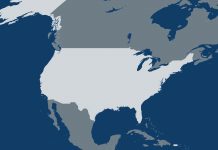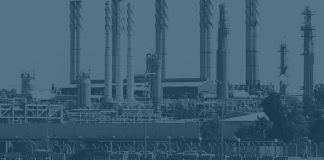Originally produced on Jan. 2, 2017 for Mauldin Economics, LLC
George Friedman and Allison Fedirka
In the coming year, the United States will remain the overwhelmingly dominant geopolitical power in the global system, and President-elect Donald Trump will be at the helm. His presidency will mark a turning point as the first significant shift towards nationalism at the center of the US political system.
As explained in our 2017 forecast, this rise in nationalism is a global trend, and one of three critical consequences of the 2008 financial crisis that will play a pivotal role in shaping geopolitics in 2017. (The other two are economic stagnation and instability in export-dependent countries.) Its rise stems from the rejection of the internationalist model that has dominated international relations since the end of World War II.
In places like Europe, it is easy to see why internationalism is losing favor. It is less obvious for the US. The European Union (EU) put in place policies and regulations that prioritized the Union’s survival over national interests, and this inherently creates conflicts of interest between the bloc and member states.
This was exacerbated by the 2008 financial crisis. Member countries saw their economies crash while their hands remained tied by Brussels, which was slow to act and offered a narrow range of Band-Aid solutions.
Unlike the EU, the US government does not answer to any regional blocs or international powers. And yet, like the EU, the US will continue to see a strong rise in nationalism in the coming year. Our forecast states that internal stresses will be reflected in US foreign policy, one of the few areas where the president has a say.
While our forecast explains what these effects on foreign policy will look like, here we explain the less obvious forces causing nationalism to rise in the US.
Cycles of Crises
Historically, the US has experienced some type of internal crisis approximately every 50 years. The book, “The Next 100 Years,” details the nature of these past crises and their paths toward resolution. Since its founding, the US has confronted an economic and social crisis every 50 years—the most recent starting with the election of Ronald Reagan in 1980.
Approximately a decade before a crisis starts, new socio-economic problems begin to emerge. Trump’s election does not mark the arrival of a crisis, but it does foreshadow the anticipated arrival of one in the 2020s.
The defining internal economic problem confronting the US today is a decline in the middle class’s purchasing power. According to our calculations, the take-home pay for a median income earner—after taxes and other deductibles, and assuming employer-provided health care—totals about $3,600 a month. At current interest rates, that would be enough to purchase a home and a car, and maintain them without savings.
A worker in the lower-middle class would earn about $2,000 a month after taxes and with employer-provided health care. That person would no longer be able to afford more than rent for an apartment. A generation ago, members of the middle class could not only buy a home, they also could enjoy an occasional indulgence, vacation, or superfluous purchase.
Political Shifts
One of the key groups most affected by this decline in purchasing power is the white working class. While it remains the single largest ethnic and social group in the country, this group found itself increasingly lacking in political representation.
Political party lines put in place by the New Deal coalition saw the Democratic Party represent workers and the Republican Party the upper-middle class. But an electoral shift that started in the South in the 1960s sparked culture wars between parties, and Democrats cut ties to one of their former bases: blue-collar workers without college degrees.
It is reasonable to expect that these grievances would influence this demographic’s voter behavior. Trump astutely tuned in to this demographic and used it as his base to win the election. It should be noted that any politician—it didn’t have to be Trump—who could successfully appeal to this group would have been a strong candidate in the November election.
The rise of US nationalism reflects the fact that extended economic dysfunction has inevitable political consequences. These consequences play out at the intersection of the emerging domestic socio-economic crisis and global economic stagnation. From 1991 to 2008, the accepted wisdom was that the more efficient an exporter nation, the stronger its economy. In reality, exporters are only as strong as demand.
The 2008 financial crisis challenged core ideas that promoted the benefits of free trade. The crisis’s other two major consequences were economic stagnation in advanced industrial countries and increased instability and insecurity in export-dependent countries. Post-crisis, export-dependent economies were no longer strong but rather weakening and vulnerable.
The Role of Free Trade
Free trade now must prove its worth, as protectionism—the economic expression of nationalism—gains momentum. Both the World Trade Organization and the International Monetary Fund have noted a decrease in world trade levels and assume there is a direct correlation between growth in trade and growth in GDP.
The relationship between trade and GDP is clear, but no one has actually figured out what that relationship is. A 2008 study by the US International Trade Commission (USITC) concludes that “all the empirical analysis” confirms a link—but none of the empirical analysis points to where the causality lies. The USITC study also points out that for developing countries, whether trade liberalization helps or hurts remains unclear.
The balance between free trade and protectionism has been a major political issue in the US since the country’s founding. While the US economy remains relatively protected from a decline in exports—which account for only 12.6% of GDP—the crisis created space for a re-evaluation of trade relationships.
These trade conversations tied directly to the growing US domestic debate over declining purchasing power and standards of living. Moving to the forefront of national conversations were the questions of job loss from industrial shifts associated with free trade, depressed wages due to global competitiveness, and loss of market share for domestically produced products.
Looking Ahead
When self-interest becomes the focal point of an argument, it is likely to spread to other dimensions of society and politics. The discussion about economic survival bleeds into larger national questions about immigration policy, military commitments abroad, trade agreement terms, and foreign aid—among others.
Furthermore, populations will head towards the path that provides the best advantage. Today, nationalism looks increasingly attractive. For those who suffered after the 2008 crisis, internationalism has not only failed to solve the world’s current political, security, and economic crises, but it’s also seen as the cause of those problems.
This shift towards nationalism in the US should not, however, be overstated. In the US, and at a global level, nationalism may not simply triumph. But this requires internationalism to reinvent itself in a way that seems like a viable alternative. Trump’s election is the first step in this extended process.
Except in the event of war, foreign policy shifts do not happen quickly in the US. The US is undergoing internal stresses that will inevitably be reflected in its foreign policy, which is further explained in our 2017 forecast.









